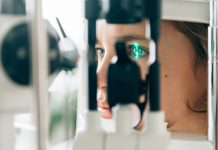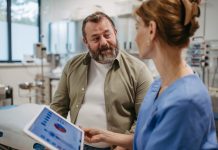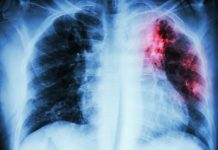Aarthi JanakiRaman, Research Director, Chemicals and Advanced Materials at TechVision, Frost & Sullivan, explores if technological advances can help optimise diabetes management
Diabetes mellitus (diabetes) has become a health problem that has far-reaching effects across the globe. It not only has a significant impact on individuals and their families, but also on a country’s economy. According to the statistics by IDF (International Diabetes Federation) Diabetes Atlas, around 537 million adults between the ages of 20-79 years are diabetic, that is, one among 10 people in the world and the numbers are expected to rise to 643 million by the year 2030; this breaks down to 61 million in Europe and around 50 million in the North America and Caribbean regions. Apart from impacting the quality of life, complications that can arise due to uncontrolled diabetes often result in morbidity and mortality. The disorder is amongst the leading causes of deaths worldwide, accounting for around 6.7 million deaths to date in 2021 alone.
Considering the widespread incidence of the disorder, the corresponding health expenditure is also quite significant. IDF statistics estimate expenditure of around $760 billion in the year 2019 and projected expenditure of around $825 billion by 2030 globally. One of the key methods to maintain a high and fruitful quality of life is for people with diabetes to take a proactive role in managing their condition. Integrated management involves careful monitoring and testing of blood sugar levels, education and intervention, lifestyle changes that include diet and physical activity and compliance. Following these can help in controlling the blood glucose levels and reduce the risk of complications such as diabetic retinopathy, nephropathy, neuropathy, coronary heart disease and others.
Technologies play a vital role in diabetes management
The last decade has seen an increase in R&D activities focused on understanding the pathophysiological changes that occur due to diabetes. It has also established the importance of both monitoring and therapeutic intervention for the holistic management of diabetes. Advances in R&D have resulted in the development of therapeutic approaches that are not only targeted, but also effective; specific therapeutic approaches focused on type 1 and type 2 diabetes have made it easier for controlling blood glucose levels. Technological advances have also resulted in the development of insulin delivery devices and glucose monitoring systems. It has also facilitated easy integration and definition of the roles of various stakeholders in managing a person’s diabetes from doctors to caregivers to patients themselves. R&D efforts and various empirical studies have established the need for effective glucose monitoring systems and their importance in the effective management of diabetes.
Continuous glucose monitoring:Gaining traction for effective management of diabetes
While various devices are available from the traditional glucometer to the more experimental combination devices and approaches such as artificial pancreas, technologies and devices that can help in continuous glucose monitoring (CGM) have gained prominence. CGM has established multiple benefits over the traditional ways of monitoring glucose. Advances in sensors have enabled the development of CGM devices that are easy to use and discrete in nature while helping in blood glucose trend analysis and establishing patterns and adjusting medication accordingly.
From the launch of the FreeStyle Libre and Dexcom G5, CGM, for example, devices have come a long way in facilitating minimally invasive and accurate glucose monitoring. Non-invasive connected sensors developments have been vital in increasing the accuracy of monitoring blood glucose levels and the longevity of the CGM device as in the case of Eversense XL by Sensionics that can last up to 180 days. There have also been various approaches investigated related to the method of monitoring. Skin patches as in the case of FreeStyle Libre to use gas sensors, radio- wave technology to microneedles, etc., with the latter proving to be an interesting approach to watch out for; being investigated as one of the most minimally invasive methods, microneedles are being tested for their potential use along with multiple sensor platforms to increase effectiveness.
Combination and integrated approaches for the monitoring and management of diabetes are gaining in popularity, apart from standalone devices. These devices can not only provide remote monitoring, but also help in providing connected care that is continuous, modular and targeted. Smart contact lenses integrated with biosensors and drug delivery materials are being researched for use in CGM, as well as to treat diabetic retinopathy. Smart pens such as that of Novo Nordisk can not only act as insulin pens, but also record dosing data to track patterns and customise therapies. The company also mentioned that it is to integrate its smart pen with Abbott’s FreeStyle Libre a couple of years ago. This can be considered as the next step in combination devices aimed at establishing integrated diabetes management.
Digital technologies are also being leveraged to get immediate access to data by healthcare providers, increase the ease of self-monitoring, predict the highs and lows, adjust the proper dosage and avoid potential diabetic shock and morbidities. Data analytics, including prescriptive analytics and AI platforms, not only help in CGM, but also predict and help determine accurate insulin dosage. Apps are also being used for tracking calorie intake, providing nutritional information and designing diet plans.
Bionic devices, including the artificial pancreas not only can mimic the functioning of the pancreas to provide insulin dosage, but their integration with AI platforms can also predict the required dosage while sensors can help in CGM. Combination devices can not only provide monitoring and therapies; they can also store and transmit data to healthcare professionals for timely intervention if needed.
What next?
Intelligent devices are considered to be the next step in targeted and continuous diabetes monitoring. Connected devices can help design customised therapies, provide data for glucose control and actionable insights for effective diabetes management. Despite various technological advances, large-scale commercialisation is still in its early stages and centred around specific parts of the world. Various factors such as regulatory scenario, availability of clinical data, cost economics play a role in influencing adoption. R&D efforts that are also focused on providing price- performance benefits can help in effectively ensuring patient compliance and disease management across the globe, thereby, increasing the quality of life for diabetics from all walks of life.











